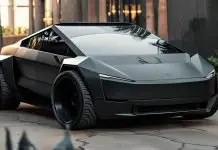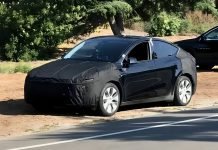We are getting to the end of the oil age very quickly and the renewable energy revolution has taken off around the world. Major European and Asian countries have announced to ban internal combustion engine cars by 2030 pushing forward the idea of electric vehicles which become more and more popular from day to day.

Electric Car battery Technology Breakthrough
How engineering advances can help achieve a new industrial revolution?
It’s known that the price of electric vehicles mainly depends on the price of a battery it’s powered by. Now the dominant type for modern consumer electronics and electric vehicles is lithium-ion batteries which price has fallen by 80% since 2010 and now is less than $200 per kWh. Lithium-ion batteries that contain essential ingredients like cobalt, nickel, manganese are crucial to the future of energy storage.
According to Statista, the top producers of lithium-ion batteries in 2018 are Panasonic Sanyo, BYD, LG Chem and Samsung. There are many types of lithium-ion batteries with different characteristics that manufacturers are focused on variants that come with relatively high energy density and have excellent longevity. Tesla has been using 1865 lithium-ion battery cells for their EVs which have a specific energy of 250 watt hours per kilogram but now they have engaged new 2170 cells for the Tesla Model 3 cars that come with 20% more specific energy and is also cheaper.
Lithium-ion Battery Improvements
The company claims they achieve this by significantly reducing expensive cobalt content per battery pack while increasing nickel content and still maintaining superior thermal stability. As the new cathode technologies are applied to lithium-ion batteries the cost continues to decrease. The producers intend to employ a ratio of 80% nickel to 10% manganese and 10% cobalt. It’s estimated that EVs will be cheaper than traditional gasoline-powered vehicles when lithium-ion batteries cost $100 per kilowatt hour. Bloomberg New Energy Finance forecast lithium-ion battery pack prices will continue to fall as little as $73 kWh by 2030.
What does the industry need now before the price of the lithium-ion batteries goes reasonably down?
Research laboratories universities and manufacturers are working to drive battery technology forward. The energy and automobile industries are currently involved in intensive research in this area. The market requires a type of battery that comes with high energy density, excellent longevity, keeps the weight light and at the same time is applicable for commercial use. We finally start seeing some real advancement in battery technology where manufacturers are developing new chemistry’s and improving processes that could result in extremely fast charging and long range. The name of this magic chemistry its silicon, the earth is rich in silicon the semiconductor that is the key component for the brains of basically every mobile electronic device. Silicon holds great potential as an anode material because it can bond with 25 times more lithium ions than graphite the main material used in lithium-ion batteries today. Most batteries today including those in consumer electronics contain 1% to 5% percent silicon and it’s a race among the battery makers to get more and more silicon in because it could increase the energy density of batteries by 20% to 30% and even more
Why haven’t companies use silicon dominant lithium-ion batteries for their electric vehicles so far?
It turns out that besides the benefits silicon also has its disadvantages when applying in batteries. When silicon accommodates many lithium ions its volume expands which can approach 400% and when the energy is used up the silicon particle shrinks and after swelling and shrinking constantly it breaks apart causing battery performance degradation but some companies have found the solution and the silicon dominates lithium-ion battery is ready to commercialize. NF8 company managed to store silicon so that it can expand and contract repeatedly and not crumble. The company’s silicon dominant technology has already been tested by third parties and proved the improved features like high energy density, ultra-fast charge, wide temperature tolerance, and improved safety. Unlike the conventional graphite cells that fade quickly when charged at high rates, this technology demonstrates eight times faster charge rates over conventional batteries without hurting the cell’s performance.
The electric vehicles can receive 240 miles or about 400 kilometers of charge in 5 minutes and reach 90% in just 15 minutes. It’s about five times faster than when charging with Tesla superchargers that provide a full charge in 75 minutes. This new technology will either extend the range on a single charge or decrease the cost of the batteries needed to reach standard ranges. For example, the second-generation Nissan Leaf that goes 150 miles on a single charge and has a price tag of $29,900 can go 190 miles with the same price or will cost about $26,000 with the same range. It will also be able to achieve eighty percent charge in a couple of minutes.
Sila Nanotechnologies
Tel Aviv University researchers have also developed low-cost silicon nanostructured anode that offers a safer higher capacity rechargeable lithium-ion battery. Former Tesla battery engineer Tim Archibald along with a professor of material science at the Georgia Institute of Technology Gleb Yushin co-founded SILA Nanotechnologies company to develop and manufacture advanced silicon electrodes and has also managed to find a method for producing rigid silicon-based nanoparticles that are internally porous enough to accommodate significant volume changes. as reports MIT technology review that could result in achieving 20% more energy density over the best existing technology.
Gene Berdichevsky said that-
We’re starting with silicon anodes and our we’ve developed we’ve developed a new class of materials that compensate for the principal challenge of these conversion materials which is a swelling and shrinking that happens with every single charge in discharge and in the battery our materials work today and we’re most importantly the drop into existing battery manufacturing so a factory that produces conventional lithium ion can adapt our materials use those and produce cells with this new chemistry that store more energy. our materials are manufacturable at scale and we’re working with consumer device companies as well as cell partners to launch in their products our technology and their products next year. We’re also working with automakers to bring this technology to market a few years down the road you’ll experience this in almost every aspect of your life, first, you’ll see more featured smaller better designed electronics that use every day. you’ll see electric vehicles with longer range faster recharge time that are acceleration but yet most importantly a lower cost.
Sila is partnering with BMW to put the company’s silicon-based anode materials in at least some of the German automakers electric vehicles by 2023 but before that the technology will be introduced into smartwatches, wireless headphones and mobile phone industry that can be an example of clever adaptation as does Samsung with its newly patented graphene battery that promises to charge 5 times faster than conventional lithium-ion batteries. It’s possible that solid-state technology and other future batteries will also revolutionize the industry but unlike these batteries that may become a reality in 10 years or so the graphene battery will be ready in a few years.
The silicon nanotechnology can make ready-made products now and doesn’t require any expensive equipment upgrades on the part of battery manufacturers. As improvements to lithium-ion anodes continue to boost performance users can expect to find their mobile devices getting smaller, smarter, charging faster and lasting longer while more affordable electric vehicles will offer better acceleration, longer range and improved performance even in colder conditions.



















Wonderful goods from you, man. I have understand your stuff previous to and you’re just extremely magnificent. I really like what you’ve acquired here, really like what you’re saying and the way in which you say it. You make it entertaining and you still care for to keep it sensible. I cant wait to read much more from you. This is really a terrific web site.
I just want to say I am newbie to blogs and absolutely loved this web-site. Very likely I’m planning to bookmark your site . You amazingly come with superb articles. Thank you for sharing your webpage.